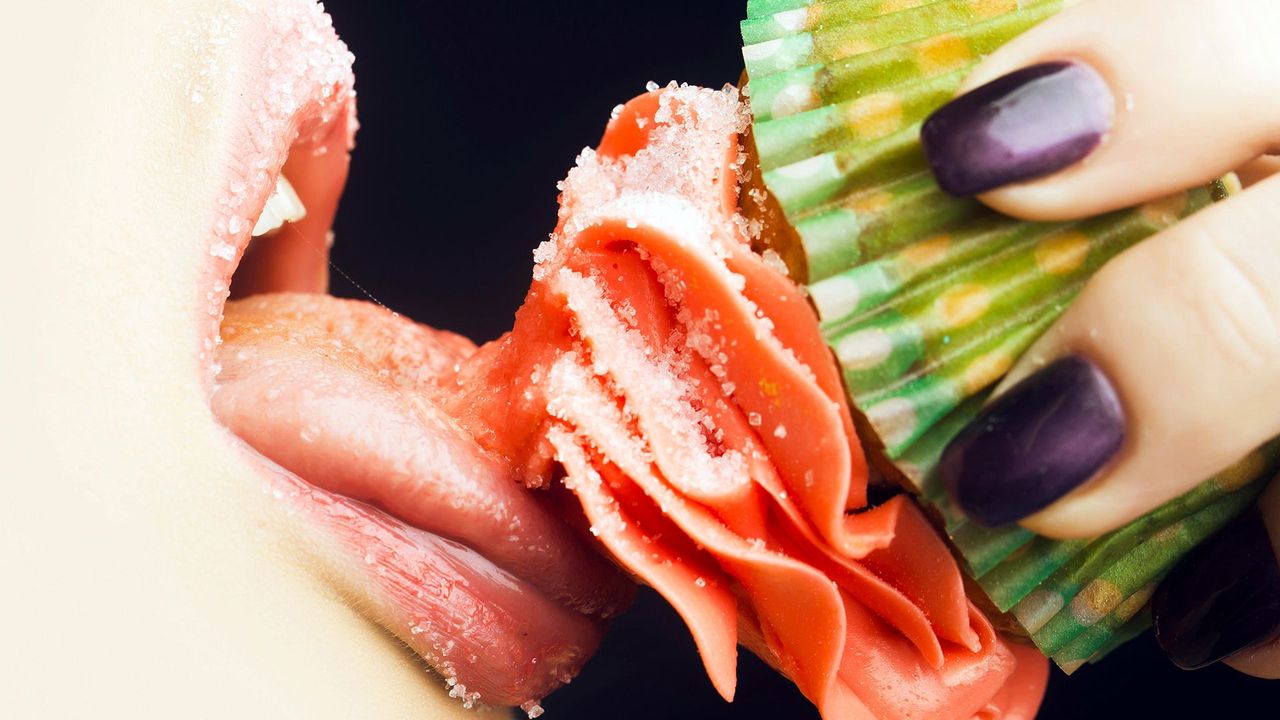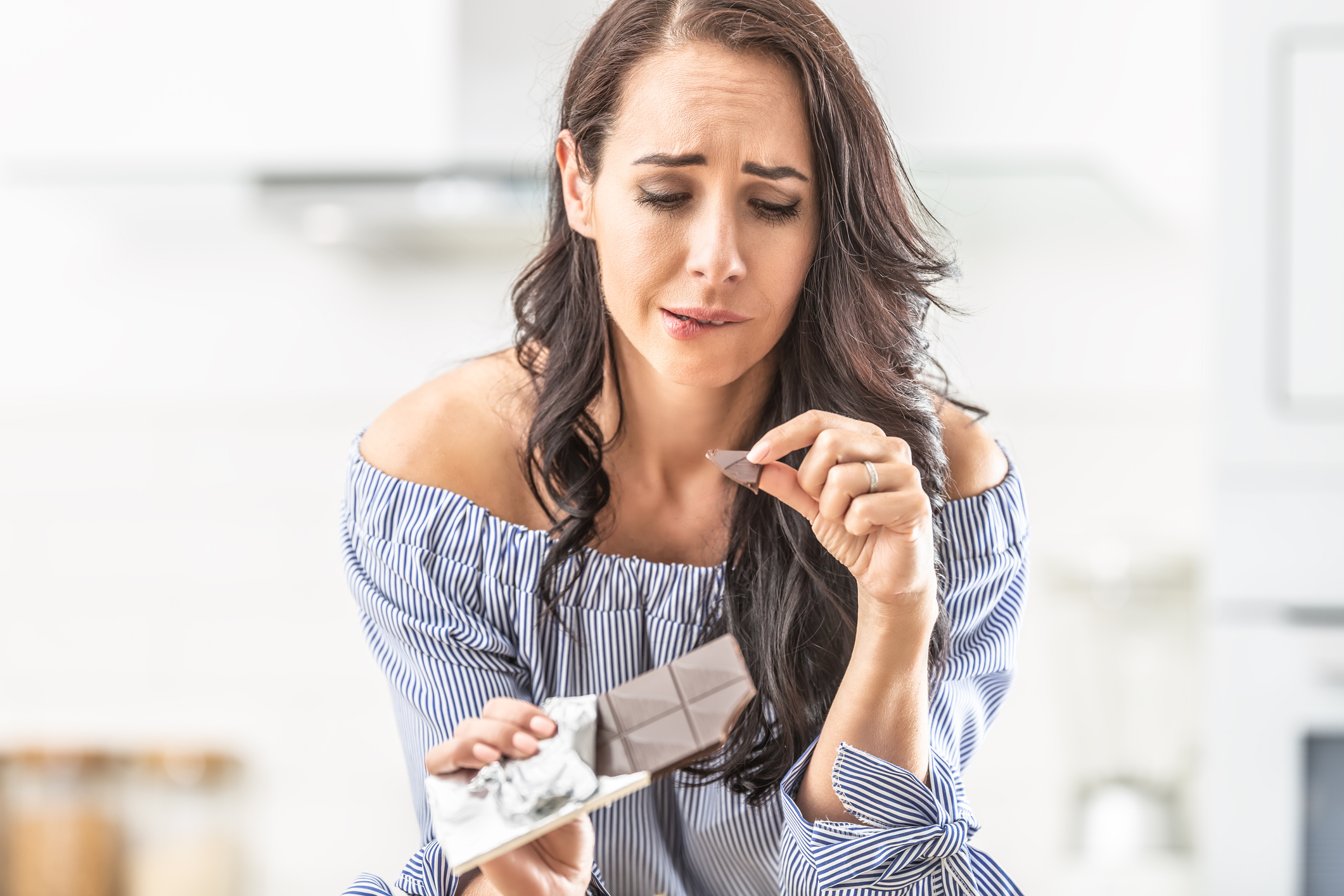So you’re considering wearing sugar from your diet, or maybe you’re once on your way. Either way, you’ve probably heard well-nigh some potential side effects of giving sugar the boot, like the dreaded sugar withdrawal.
When wearing when on the sweet stuff, some people may wits some initial negative effects one of which is the potential “sugar detox” headache. Why does this happen? It’s likely considering wearing sugar stresses your brain a bit. Let’s take a closer look.
When you eat sugar, your smart-ass releases dopamine, the “feel-good” smart-ass chemical. Your soul toadies it with a reward. Logically, you may know that sugar is bad and can lead to wrongheaded effects,” says Michele Promaulayko, tragedian of Sugar Free 3. “But your reward part-way drives you to just alimony eating,

Source: google.com
When you cut when on added sugar, or eliminate it from your nutrition completely, your soul has to retread to not getting regular hits of dopamine from that particular source. Meanwhile, levels of acetylcholine a neurotransmitter that causes neurons to fire rise. This can rationalization some distress to the nervous system, leading to aches and pains in the soul and sugar withdrawal symptoms.
Sugar Withdrawal: What is it?
When you consume high amounts of sugar regularly, your body becomes addicted to it. Sugar activates the pleasure centers in your brain, releasing dopamine and giving you a temporary feeling of happiness. However, when you suddenly reduce or eliminate sugar from your diet, your body goes through a withdrawal process as it adapts to the absence of its addictive substance.
Coping with Sugar Withdrawal: Tips and Tricks
1: Hydrate: Drinking plenty of water can help flush out toxins from your body and alleviate some withdrawal symptoms. Aim to drink at least eight glasses of water per day.
2: Eat whole foods: Opt for whole foods such as fruits, vegetables, whole grains, and lean proteins. These will provide your body with the necessary nutrients and keep you feeling fuller for longer, reducing cravings for sugary snacks.

Source: google.com
3: Monitor your caffeine intake: Reducing your caffeine intake can help manage sugar withdrawal symptoms. Caffeine can impact your blood sugar levels and contribute to cravings for sweets.
4: Get active: Engaging in regular physical activity not only helps distract you from cravings but also releases endorphins, improving your mood and reducing the intensity of withdrawal symptoms.
5: Get enough sleep: Sleep plays a crucial role in managing sugar cravings. Lack of sleep can disrupt hormones responsible for hunger regulation, leading to increased cravings.
6: Seek support: If you're finding it challenging to overcome sugar withdrawal, consider seeking support from friends, family, or joining a support group. Surrounding yourself with like-minded individuals can provide encouragement and motivation.
These symptoms may include:
Headaches
Nausea
Dizziness
Why You Get Sugar Withdrawal Headaches
A headache is perhaps the most worldwide symptom people report when they cut out sugar or caffeine. Researchers aren’t 100 percent positive why headaches occur as a sugar withdrawal symptom, but they theorize it could be due, at least in part, to the brain’s stress system.
In a study published in The Proceedings of the National Academy of Sciences (PNAS), researchers fed two groups of mice variegated diets one unceasingly low in sugar, and one upper in sugar (chocolate-flavored) on unrepealable days.
They found that the mice on the cycled chocolate-flavored sugary nutrition exhibited some withdrawal-like responses when they didn’t have wangle to the sweet stuff. Their level of corticotropin-releasing factor (CRF) a hormone in the part of the smart-ass that controls fear, anxiety, and stress responses was raised.
It was five times higher than the tenancy group, and only stabilized when the mice were fed chocolate-flavored sugary feed.
How Long Does Sugar Withdrawal Last?
Don’t let any of this deter you from reducing or eliminating widow sugar from your diet. According to the Cleveland Clinic, you can unravel your sugar habit in just 10 days. And chances are, if you’re like most of us, you eat way too much anyway.

Source: google.com
The stereotype American consumes 17 teaspoons (about 71 g) of sugar a day, which ways 270 calories from added sugars every…single…day.
That’s way over the American Heart Association’s recommendation that men have no increasingly than 9 teaspoons (36 g) and women no increasingly than 6 teaspoons (24 g) per day.
It’s not entirely our fault. Food manufacturers sneak widow sugar into products we’d never expect, including breads, tomato sauce, salad dressings, and some low-fat foods. (When fat is removed, it has to be replaced with something, and that something else is usually sugar.)
Limiting your intake of widow sugars withal with maintaining a healthy weight and raising a healthier lifestyle — can have a range of positive effects, including maintaining steadier energy levels.
Don’t let the potential of a temporary headache dissuade you from making changes that can modernize your overall health for a lifetime.
Conclusion
Sugar withdrawal can feel challenging and overwhelming, but it is a necessary step towards a healthier lifestyle. By understanding the effects of sugar withdrawal and implementing coping strategies, you can successfully overcome cravings and reduce your sugar intake. Remember, it's a journey, and every step counts towards a happier, healthier you.







